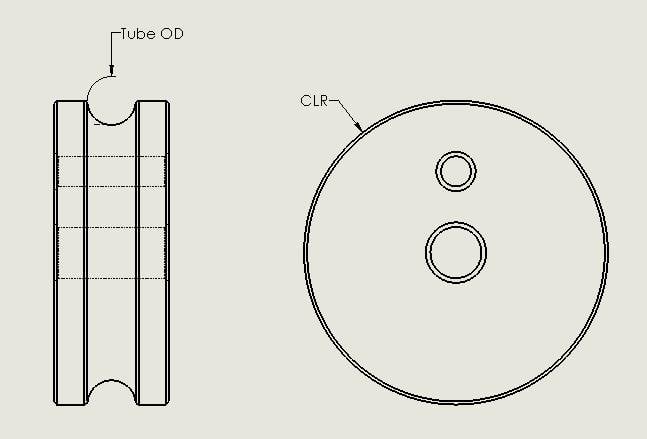Unveiling the SOCO SB80 Series
Mandrel exhaust benders have been around for a while now. The SOCO SB80 Series with cut-off offered by Tube Form Solutions is one of the most popular machines we sell. And there are plenty of good reasons for that fact.
The exhaust tube size typically determines the proper mandrel exhaust bending machine. The SOCO SB80 Series handles exhaust tubes from 3/4" to 3" in diameter. This series of tube bending equipment benefits from a simple yet robust designed machine that can be configured with either a single tool stack or with multiple tube bending die stacks and can handle compound tools and multiple bends.
This tube bender includes up to four tooling stacks which deliver incredible design and shop floor flexibility. With the multiple stacks, you can bend (add graphic) tubes in unlimited ways offering designers the option to develop more complex parts. The multi-stack tooling levels make this machine more versatile and reduces changeover times
For high-volume applications, the SOCO SB80 Series allows for partial changeover when bending simple parts by quickly changing the mandrel and collets. Operators can then start running a different diameter part on another tube bending dies stack because the machine has the multi-stack capability.
The SOCO SB80 Series is configurable with a 5-12 electric axis with 1.5D capability. Additional upgrades include the first stack patented Double Blades Shearing System (DBS) allowing for automation of bending and cutting processes in one Tube Bending machine from a single tube.
Another popular option, 1D controlled wall thickness bending, is specially used in the production of manifolds and converter inlet pipes within the automotive exhaust system, where the wall thinning ratio must be controlled to ensure that the tube can withstand the high system pressure.
To help explain the nomenclature of 1.5D and 1D bending:
Benders are rated in D of Bend or (D). What does that mean? Well it relates to the CLR (Center Line Radius) and the tube OD (Outer Diameter or Outside Diameter) and (ID – Inner Diameter or Inside Diameter)
D = CLR/Tube OD
Examples would be:
1D = 2" CLR/2" Tube OD
1.5D = 3" CLR/2" Tube OD
2D = 4" CLR/2" Tube OD
If a bender is rated as 1.5D capable, the ratio of the parts to be bent on it must follow the formula.
"Our engineers work with our customers to determine bending head torque using the tube center line radius, material, and diameter and we help them choose the best machine for their specific exhaust tube bending application. The SB80 series runs complex parts fast or it could be a dedicated machine for a job shop," says Kyle Eagle Tube Form Solutions Applications Engineer.
One option available is a double-blade shear cut-off that allows operators to make several small parts out of one long tube faster while saving scrap between parts. The first blade makes a small cut making the second blade less damaging to tube roundness during the cut. The end result is a more consistent part because the part is not distorted.
The SOCO SB80 Series mandrel exhaust bender can process typical materials used for automotive exhausts like 409, 439, 441, 301, 304, and 309 stainless steel.
Specific Benefits Include:
- Expandability - buy something for now or for future business - works well with low-volume and high-volume scenarios
- Ease of changing tooling - partial change over to quickly run other parts, change over often - an example is a job shop
- Capable of bending complicated parts - uses all four tooling stacks for long-run production or multiple parts
- Options - cutting capability
If you need a mandrel exhaust bender for your automotive application contact the experts at Tube Form Solutions.
